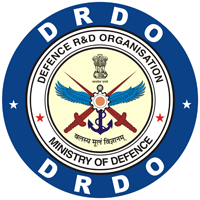RDX/AP-CMDB Propellants Containing Fullerenes and Carbon Black Additives
DOI:
https://doi.org/10.14429/dsj.59.1522Keywords:
Fullerene, combustion properties, burning rate, CMDB propellant, RDX/AP-CMDB propellantsAbstract
The influence of fullerene additives on the combustion behaviour of cyclotrimethylene trinitramine/ammonium perchlorate composite modified double-base (RDX/AP-CMDB) propellants are investigated by thermogravimetricdifferential thermogravimetric (TG-DTG) analysis, burning rate tests, and scanning electron microscopy observations. The difference between lead salicylate (F-Pb) and bismuth citrate acid (CP-Bi) as combustion modifiers has also been examined. TG-DTG investigations show that the addition of all additives advanced and accelerated the evaporation of nitroglycerin (NG). The addition of Extracted Fullerene Soot (EFS), C60 and carbon black (CB) additives obviously accelerated the liquid phase decomposition of NG. Also, the solid phasedecomposition of nitrocellulose (NC) and the liquid phase decomposition of RDX were accelerated by 0.5 per cent Fullerene Soot (FS)/2.5 per cent CP-Bi/0.5 per cent copper adipic acid (J-Cu) composite catalyst. The addition of all composite catalysts promoted the decomposition of ammonium perchlorate (AP) except 0.5 per cent EFS/2.5 per cent CP-Bi/0.5 per cent J-Cu composite catalysts. It is well known that there exists dark zone in the flame structure of RDX-CMDB propellant, but in our observation, the dark zone vanished with the addition of 10 per cent AP to the forenamed propellant. The burning rates were increased at low pressure but reduced at high pressure by all catalysts except 0.5 per cent EFS/2.5 per cent CP-Bi/0.5 per cent J-Cu and 0.5 per cent C60/2.5 per cent CP-Bi/0.5 per cent J-Cu which reduced the burning rates at every tested pressure. The pressure exponents of tested propellants were reduced by 0.5 per cent FS/2.5 per cent CP-Bi/0.5 per cent J-Cu with a factor of 17 per cent . The quenched surface observations significantly differed with the additions of diverse composite catalysts, which were consistent with the burning rate results.
Defence Science Journal, 2009, 59(3), pp.284-293, DOI:http://dx.doi.org/10.14429/dsj.59.1522
Downloads
Published
2009-05-01
How to Cite
Han, X., Wang, T. F., Lin, Z. K., Han, D. L., Li, S. F., Zhao, F. Q., & Zhang, L. Y. (2009). RDX/AP-CMDB Propellants Containing Fullerenes and Carbon Black Additives. Defence Science Journal, 59(3), 284–293. https://doi.org/10.14429/dsj.59.1522
Issue
Section
Research Papers
License
 Where otherwise noted, the Articles on this site are licensed under Creative Commons License: CC Attribution-Noncommercial-No Derivative Works 2.5 India
Where otherwise noted, the Articles on this site are licensed under Creative Commons License: CC Attribution-Noncommercial-No Derivative Works 2.5 India

